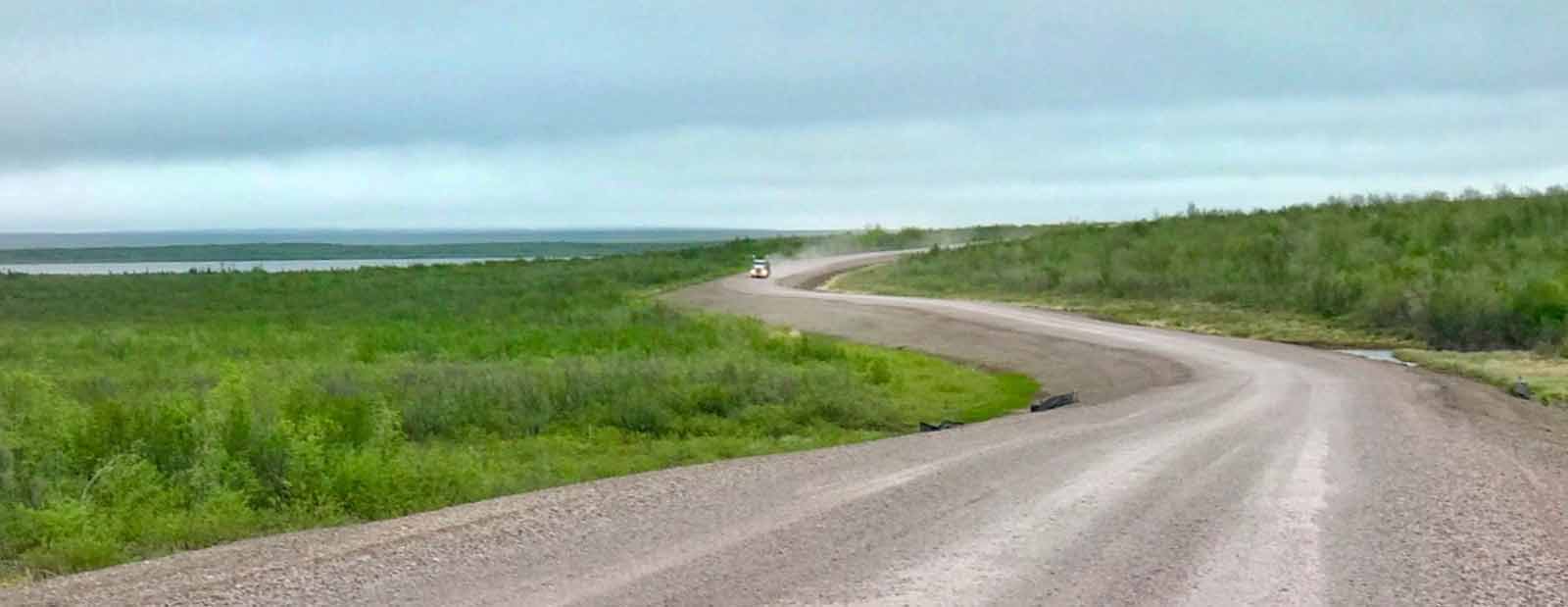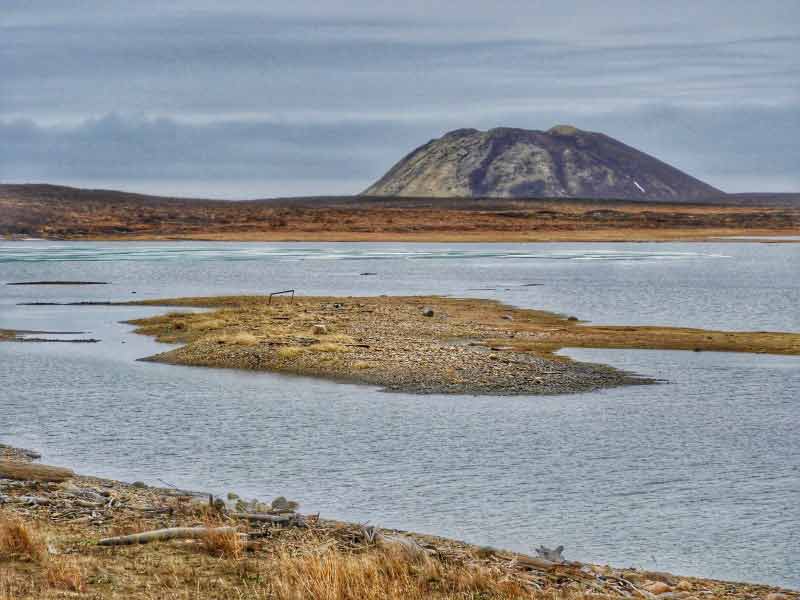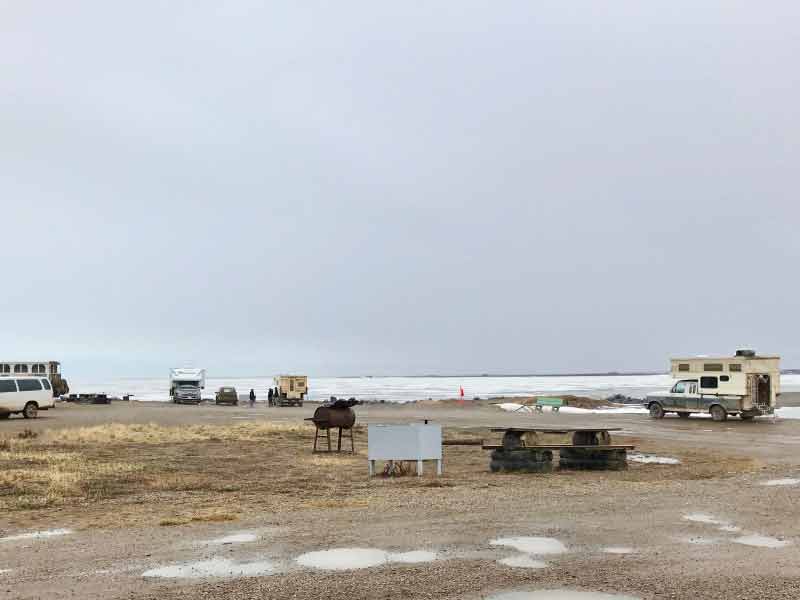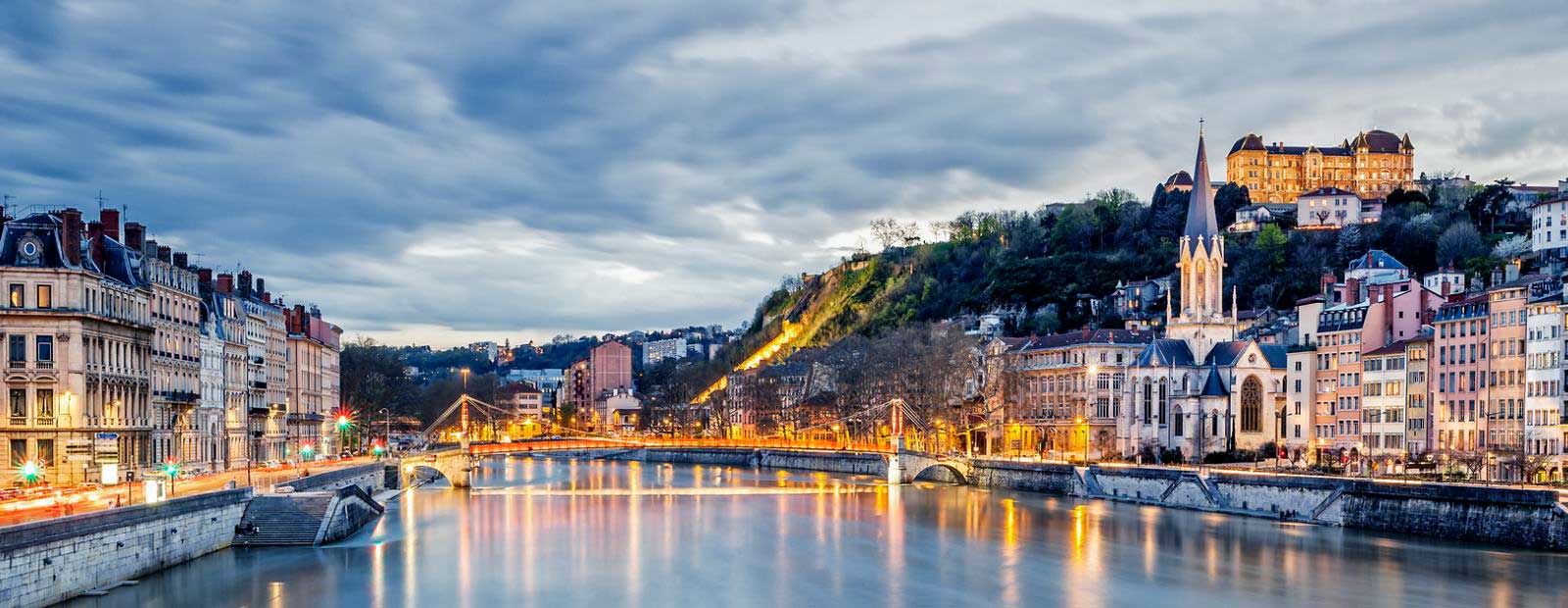
By Carol Patterson
Travel Writer27 Sep 2018 - 6 Minute Read
I loosened my white-knuckle grip on the steering wheel and peered down the narrow ribbon of gravel. The flat light rubbed away the horizon’s edge and clouds hovered above the Arctic permafrost. A short distance away stood several porridge-coloured industrial trailers, lashed together into a two-story building, plywood across ground-floor windows. Drawing to the end of my long drive north to Tuktoyaktuk, this, I realized, was where it had all began.
“All” being the career that catapulted me from a doe-eyed accountant to a wide-eyed travel writer. I was one of the first wave of outsiders in the 1980s to travel to Tuktoyaktuk (or Tuk) – all of us oil and gas workers arriving in the Northwest Territories on a chartered Boeing 737. I had come to handle the paperwork needed for oil and gas exploration north of the Arctic Circle. The extra money I received for going north paid for a private pilot’s license that led to my real passion, the creation of a flying zoo – taking small animals and interpretative programs to rural communities – my discovery of ecotourism, and, ultimately, my reinvention as a writer.
Now, I was back to drive a new 138km (86mi) road, built to allow easier entry to this community previously accessible only by plane and ice road. At a cost of almost $300 million CAD, it’s one of Canada’s most expensive roads on a per-km basis.

I wanted to be one of the first summer visitors to tackle this Canadian road – connecting the country’s three coastlines – to the Arctic Ocean. It took four days of flying and driving to reach Inuvik, mile zero for the new Inuvik-Tuktoyaktuk Highway (ITH). I hoped it would take me no more than another four hours to get to the end of the road – Tuktoyaktuk – but road conditions were deteriorating along with the weather.
The light grew flatter as I drove north, even though the sun wouldn’t set for another 30 days. The landscape got flatter too – trees were squat and scraggly, hills gave way to hummock-filled plains, and apart from the highway there were no signs of human habitation. A pair of grey, Long-tailed Jaegars perched on the roadside, patrolling for lemmings, and flapped skyward as I approached. A “No Passing” sign adorned the gravel road, free of center or shoulder lines.
My SUV slithered across gravel wet from a soft drizzle. I clutched the steering wheel tightly, heart racing and feeling both terror and determination. I accelerated up a hill, the big vehicle fish-tailing in the mud, and, suddenly, my Dad’s voice echoed in my head, “Steer into the skid and keep moving!” Growing up in Saskatchewan with its snowy winters, we had no four-wheel drive, just skills developed from plowing a heavy Chevrolet Impala through deep drifts, Dad encouraging or scolding as needed.
I thought of my father, dead a decade now, and how excited he had been when I’d landed the “real” job that brought me to Tuk. He was less enthusiastic when years later, I left it to pursue a freelancer’s life with more travel. He hadn’t lived long enough to see my successful metamorphosis, but he would have been proud of my driving as I kept moving when others faltered.
The muddy road clung to the tires of several motorbikes, refusing to let go. “Do you need help?” I yelled at a stalled driver, as I passed him slowly, the road too slippery to risk a full stop. “Send a flatbed truck,” the white-haired biker yelled back, and waved me on.

Soon I saw pingos, hills with ice cores created in permafrost conditions, forming lumps on the otherwise flat landscape. These formations are characteristic of the Tuktoyaktuk Peninsula – I knew I must be getting close. Before long I spotted the low, square buildings of Tuk.
Looking at the empty structures where I once balanced budgets, they seemed smaller than I remembered, somehow blown up to mythical proportions in my memory. I looked at the wing where I’d worked all night to implement a computer program, going to the cafeteria at two in the morning for coffee, thrilled to be rubbing shoulders with drill-hands and mariners. I grew into adulthood while working at this company, and now, 30 years later, my friends are retiring, and I realize my own working years may be nearing an end. It seemed my visits to Tuktoyaktuk were the brackets on my career.
I stopped at the hamlet office for a certificate proclaiming my success in conquering the new road. The town clerk added my name to a piece of paper declaring “I travelled the highway to the Arctic Ocean!!!” I wasn’t sure if the extra exclamation points underscored the difficulty of the drive or their excitement in welcoming new tourists, but I was jubilant to have made it (and without a tow truck).

I paused to snap a picture with other adventurers at a tiny park poking into the Beaufort Sea. The world could now find its way to Tuk, and there were notes of celebration riding the dancing winds. Travelers eschewed the comfort of their vehicles to swap tales of the road and gather courage for their return south. A woman from northern Ontario (not exactly known for its mild weather) revealed it was the toughest drive she and her husband had ever done. “I was scared stiff,” she confided to me, “but we love to explore. I just wish we had your bigger SUV!” This beach was as far north as the road went; I gave myself a high five for having arrived.
Not able to linger (Tuk’s handful of B&Bs were full), I stopped at the Northern store to buy snacks for the road. An Inuit woman approached me – her sun-burnished skin crinkled as she smiled. “Is this your first trip to Tuk?” she queried. Her eyes widened when I said it wasn’t, and that I’d worked in Tuk at the oil and gas company.
“So did I!” she squealed, happy to find a repeat visitor, “I worked in the kitchen, but I left after three days.”
Gazing at her cropped black hair and erect posture, I wondered how her life unfolded after that job. When I had first come to Tuk, I hadn’t known what events I would trigger in my own life as a result. Although there are plans for a campground, interpretative center, and a dogsled touring company, I suspected Tuk’s residents aren’t completely sure what changes this new road will unfurl.
I saw no recognition in her chocolate-brown eyes as her gaze searched my face, but I felt a connection. I wondered if, like me, she’d rejected work that didn’t meet her needs. Perhaps we’d both felt the pull of the land, the need for freedom to journey on our own terms. I wasn’t sure she would remember this encounter, but I would not forget my time in Tuk and the ribbon of highway that wrapped the book ends of my working life together.
Discover similar stories in
transformation
Travel Writer
Carol’s adventures spurred her to leave an oil and gas accounting career to see wildlife.

No Comments